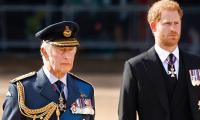The 2021 Global Gender Gap Report disclosed by the World Economic Forum (WEF) on Wednesday March 31, 2021 has placed Pakistan as the fourth worst country in the world in gender parity. The report put Pakistan at 153 out of 156 countries due to its gloomy performance in bridging the gender gap, which currently stands at 55.6 percent.
The fact is that the persistent gap between women and men in their access to resources and opportunities is a social and economic challenge. This gap not only weakens the quality of women’s life but also poses a substantial threat to the long-term development and well-being of nations that do not fully exploit the potential of one half of their human resources; this compromises the competitive potential of such countries.
Shockingly, Pakistan’s position on the gender gap index has been stagnant as the country has not made any progress in improving the gender gap. The 2006 Global Gender Gap report had covered 115 countries that represented around 90 percent of the world population and ranked Pakistan at 112, the fourth worst country in the world.
In the 2021 report, out of 156 countries, Pakistan is positioned at 152 in economic participation and opportunity, 144 in educational attainment,153 in health and survival, and 98 in political empowerment. However, in the 2006 report, out of 115 countries, the country was placed at 112 in economic participation and opportunity, 110 in educational attainment, 112 in health and survival, and 37 in political empowerment.
After going through the two reports, it is concluded that even after the passage of fifteen years no improvement in Pakistan’s rankings in all the four sub-indexes has taken place. However, the country’s ranking in political empowerment has deteriorated. The ranking in the sub-index was comparatively higher in 2006 and is lower in 2021.
As per the 2021 report, with a woman having been head of state, Pakistan stands among the top 33 countries in the world on this indicator. However, women’s representation as parliamentarians is only 20.2 percent and as ministers stands at 10.7 percent. In reality, women’s participation is very low in the country’s politics.
According to the CountryMeters website, Pakistan’s overall current population as of Friday, April 9, 2021 stands at 224 million and of the total population, men are 50.8 percent and women make up 49.2 percent. The data released on October 2, 2020 by the Election Commission of Pakistan (ECP) shows that of the overall 115 million registered voters in the country, 51 million are women.
Unfortunately, Pakistan executes an unfair, unreasonable and prejudiced model of proportional representation for the election of women. The number of reserved seats for women to a party are allocated in proportion to general seats won, which at the moment stands at 17 percent. In this system, women elected to the reserved seats are neither given any power to influence the decision-making or policy-forming process, nor are they allocated development funds.
The fact is that the lack of women’s representation in the decision-making and policymaking process is the main factor responsible for the existence of gender disparity in our economic, social and cultural life. This is why women’s issues have been ignored in public policies and programmes. There is an utmost need to empower women to perform an influential role in decision-making and policy formation in the country. To this end, they need to be provided with political representation directly proportional to women’s registered votes or their votes polled in the elections.
Pakistan has to raise women’s participation in its male-dominated politics as increased women’s representation will enable them to speak up forcefully and resolutely for their rights on both the provincial and national political platforms. Pakistan’s mainstream political parties – the PTI, the PPP and the PML-N – can get the ball rolling for women’s participation in politics. Moreover, women have to be involved in the conventional political and electoral process. This will enable them to set-up bilateral relationships with the common citizens.
The 2021 report says that the enrollment gender gap in Pakistan’s overall education system stands at 13 percent. These gaps become widest at the lower educational levels – 84.1 percent in primary, 84.7 percent in secondary and 87.1 percent in tertiary levels. Further, only 46.5 percent of women are literate, 61.6 percent attain primary school education, 34.2 percent attend high school and 8.3 percent seek tertiary education.
In reality, Pakistani women face a very dismal and disheartening situation when it comes to their schooling. It is a fact that gender parity in education is a prerequisite to achieving the goal of gender equality in all the other three sub-indexes. Education enlightens a person about her/his rights. How can a person ignorant of their rights even demand them? Women who have been denied access to education in the country have been deprived of their fundamental rights to economic participation and opportunity, educational attainment, health and survival, and political empowerment.
Because such wide gender gaps in all the indicators is a serious and threatening issue, Pakistan’s concerned authorities should take immediate and productive initiatives aimed at bridging these gaps.
The writer is a freelance contributor.
Twitter: @ARShykh
An aeroplane of the national flag carrier of Pakistan is seen in this file photo. — AFPWhile Pakistan considers...
Representational image of a graph depicting various variables. — APP/FileInitiated by the centre and fiercely...
In this picture taken on April 16, 2023, people throng a market area during shopping in Lahore. — AFPOne of the...
Honour crimes also target men. In Sikandar Ali Lashari vs The State, SHC upheld conviction passed by ATC for honour...
If Sindh earmarks Rs20 million per police station, it will cost only Rs10 billion to make them effective first...
A complex and difficult policy environment seems to be highlighted by US’s recent application of sanctions on...







